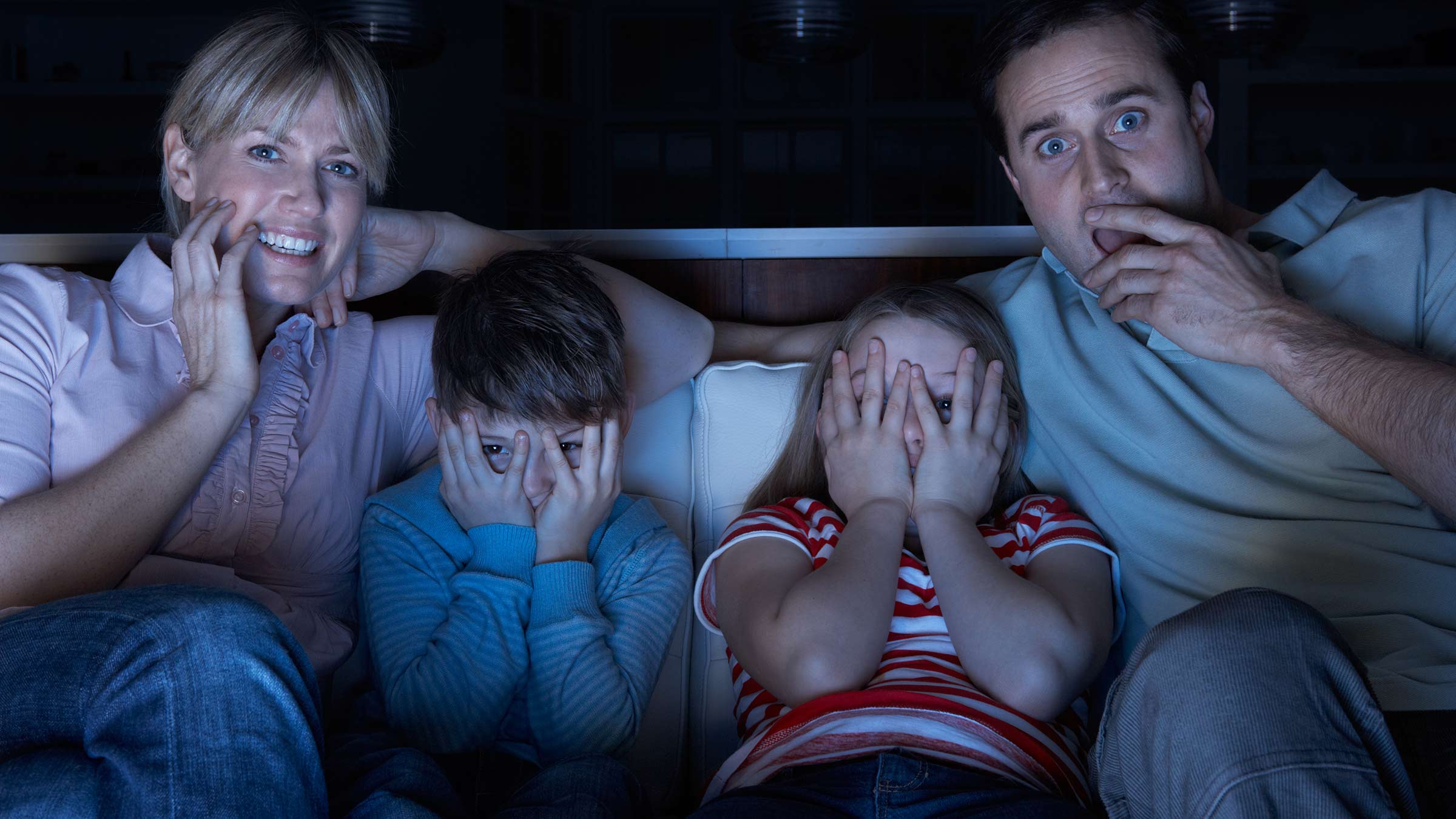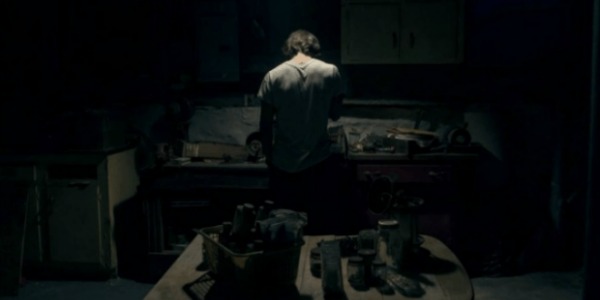Halloween Movies Ranked by How Much They'll Traumatize You (2025 Edition)
Halloween Movies Ranked by How Much They'll Traumatize You (2025 Edition)

October is here, which means it's time to indulge in spine-chilling horror movies that leave you sleeping with the lights on. But not all Halloween films are created equal when it comes to their traumatizing potential. Some deliver jump scares you'll forget by morning, while others burrow deep into your psyche and haunt you for years.
Whether you're a thrill-seeker searching for the most disturbing Halloween movies or just trying to avoid nightmares before your 9 AM meeting, this definitive ranking breaks down Halloween horror films by their psychological impact. From mild frights to absolute nightmare fuel, we've categorized these terror-inducing films so you know exactly what you're getting into this spooky season.
Level 1: Mild Trauma (Sleep With One Eye Open)
These Halloween movies deliver classic scares without permanently damaging your mental health. Perfect for horror newbies or anyone who wants seasonal thrills without existential dread.

Hocus Pocus (1993)
Trauma Level: 2/10. Campy, comedic, and family-friendly. The Sanderson Sisters are more entertaining than terrifying, though younger viewers might find the child-soul-stealing plot slightly unsettling.
The Lost Boys (1987)
Trauma Level: 3/10. Stylish vampire fun with some genuinely creepy moments. The transformation scenes and blood-drinking imagery provide mild scares, but the overall rock-and-roll aesthetic keeps things entertaining rather than traumatizing.
Chopping Mall (1986)
Trauma Level: 4/10. Killer security robots at a shopping mall sound absurd (because they are), but the head explosion scene delivers unexpected gore. This 80s cheese-fest won't haunt you, but it'll make you respect mall security.
Level 2: Moderate Trauma (Nightmares Guaranteed)
Now we're getting serious. These Halloween horror films will absolutely affect your sleep schedule and might make you question everyday situations.
The Blair Witch Project (1999)
Trauma Level: 5/10. The found-footage pioneer still holds up as genuinely unnerving. The psychological terror of being lost in the woods, the unseen threat, and that final scene in the basement create lingering anxiety. You'll think twice before going camping.
Child's Play Franchise
Trauma Level: 5/10. Chucky ruined dolls for an entire generation. The original film delivers solid horror, though later installments lean into dark comedy. The real trauma comes when you realize two possessed dolls somehow reproduced.
Halloween (1978)
Trauma Level: 6/10. John Carpenter's masterpiece introduced the world to Michael Myers and established the slasher blueprint. The methodical stalking, emotionless mask, and seemingly unstoppable killer create genuine tension. That final moment when Laurie asks where he went and Dr. Loomis coldly responds "He's still out there" will stick with you.

28 Days Later (2002)
Trauma Level: 6/10. Post-COVID audiences will find this rage virus thriller especially disturbing. The empty London streets, terrifyingly fast zombies, and themes of societal collapse hit differently now. The human villains prove even more frightening than the infected.
Level 3: Severe Trauma (Therapy-Worthy)
These films don't just scare you—they fundamentally change how you view the world. Proceed with extreme caution.
The Exorcist (1973)
Trauma Level: 7/10. Still the gold standard for demonic possession horror. Linda Blair's transformation from innocent child to demon-possessed nightmare fuel remains viscerally disturbing. The spider-walk scene (added in later releases) and rotating head will invade your dreams. Catholic school survivors report elevated trauma levels.
The Texas Chainsaw Massacre (1974)
Trauma Level: 7/10. Despite minimal on-screen gore, Tobe Hooper's masterpiece creates an atmosphere of relentless, sweaty terror. The dinner table scene alone justifies therapy sessions. You'll never look at rural Texas the same way—which, honestly, is probably for the best.
Funny Games (1997/2007)
Trauma Level: 8/10. Michael Haneke's home invasion thriller weaponizes audience expectations and fourth-wall breaks to create profound discomfort. Unlike typical horror, there's no catharsis here—just methodical cruelty and the sinking realization that violence isn't entertainment. This one stays with you.

Invasion of the Body Snatchers (1978)
Trauma Level: 8/10. The ultimate paranoia film. Anyone around you could be replaced by an emotionless alien duplicate, and you'd never know until they point and emit that bone-chilling shriek. Trust issues for life.
Level 4: Extreme Trauma (Your Brain Will Never Recover)
These Halloween movies represent the apex of psychological horror. They don't rely on jump scares—they dismantle your sense of safety and reality itself.
Hereditary (2018)
Trauma Level: 9/10. Ari Aster's family trauma horror features THAT car scene—one of the most shocking moments in modern cinema. The grief, guilt, and supernatural dread combine into a suffocating nightmare. Toni Collette's performance alone will haunt you, and that clicking sound... you'll never unhear it.
The Shining (1980)
Trauma Level: 9/10. Stanley Kubrick transforms Stephen King's ghost story into a meditation on madness and isolation. Room 237, the twin girls, "REDRUM," the bathroom scene—every frame feels wrong. The psychological descent of Jack Torrance remains genuinely disturbing because it feels possible.
Martyrs (2008)
Trauma Level: 10/10. The French extremity movement's most notorious entry. What begins as a revenge thriller spirals into existential horror exploring suffering and transcendence. Not for the faint of heart or anyone who values their mental well-being. Watching this film is a choice you cannot unmake.
How to Survive Horror Movie Trauma
If you've ventured too deep into horror territory this Halloween, here are expert-approved coping strategies:
- Watch comedies afterward: Palette cleansers help reset your mental state. Follow Hereditary with The Office.
- Keep lights on: No shame in adult nightlights. Darkness amplifies anxiety.
- Discuss with friends: Talking through scary scenes reduces their power. Horror is less frightening when shared.
- Avoid watching alone at night: Context matters. Daytime horror hits differently than 2 AM viewing sessions.
- Remember it's fiction: Remind yourself these are actors with paychecks, not actual demons or killers.

Frequently Asked Questions
What makes a Halloween movie actually traumatizing?
True trauma comes from psychological horror rather than gore alone. Films that tap into primal fears (loss of control, betrayal, isolation), feature realistic scenarios, or present disturbing concepts without resolution tend to create lasting impact. Jump scares fade quickly; existential dread lingers.
Can watching scary movies have long-term effects?
For most adults, no permanent damage occurs from horror films. However, people with anxiety disorders, trauma history, or certain psychological conditions should be cautious. Children exposed to age-inappropriate horror can develop legitimate phobias. Know your limits and respect them.
Which Halloween movie is scientifically the scariest?
Studies measuring heart rate and physiological responses consistently rank "Sinister" (2012), "Insidious" (2010), and "The Conjuring" (2013) among the scientifically scariest. However, "The Exorcist" maintains its crown for cultural impact and lasting psychological effects across generations.
How do I pick the right trauma level for Halloween movie night?
Consider your audience: Level 1 works for families with teens; Level 2 suits casual horror fans; Level 3 challenges seasoned viewers; Level 4 is exclusively for hardcore horror enthusiasts. When in doubt, start mild—you can always escalate, but you can't unsee extreme horror.
Survived This Guide?
Share it with your horror-loving friends so they know what they're getting into this Halloween! Help others avoid (or embrace) cinematic trauma.